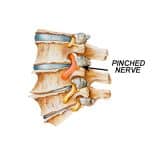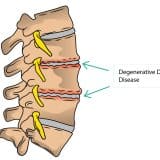FREQUENTLY ASKED QUESTIONS
- 1. Can people who have scoliosis live a normal life?
- 2. What are various treatment options for scoliosis?
- 3. What are some activities that people living with scoliosis should avoid?
- 4. Which organs are affected by scoliosis?
- 5. When should you see a doctor for scoliosis?
- 6. How does kyphosis affect daily life?
- 7. What are some of the complications that occur with kyphosis?
- 8. Is it possible to prevent kyphosis?
- 9. Can kyphosis be reversed?
- 10. What happens when kyphosis is left untreated?
Yes, people who have scoliosis can live a normal life and carry out their daily activities such as sports and various exercises. Scoliosis does not cause a lot of pain or any other major health issues and remains the same once you stop growing. It is tough to wear a brace or have scoliosis, and it can cause some issues with your body image as well as self-esteem, but it will not hamper daily activities.
How scoliosis will be treated depends on some factors like your age, the severity of the curve and whether or not it is going to become worse as time passes by. A lot of people will not require treatment, and some will require surgery. Babies, as well as toddlers, might not require treatment as their curves may improve as they grow. Generally, a plaster cast can be fitted in their back to stop the curve from getting worse when they grow. Other children might wear back brace to stop the curve from becoming worse till they stop growing. In some cases, surgery might be required to control the growth of the spine, and once the growth stops, it is operated to straighten it. In the case of adults, they require treatment for getting relief from pain like using painkillers, injections in the spine and sometimes surgery.
There are certain activities that someone suffering from scoliosis must avoid. But it is important to keep in mind that not all cases of scoliosis are the same, and you must consult a good medical professional before getting engaged in any of the activities that you are not sure about. Here are a few activities that are better to avoid if you have scoliosis:
- Bending your neck to see your phone makes your head heavier
- Lifting up some heavy objects because it makes the curve more pronounced
- Some sports, like hockey, lacrosse, racket games, rugby, gold, etc., are better to avoid
Some of the severe cases of scoliosis can put an impact on several body parts, such as
Lungs
When scoliosis worsens, it can weaken the functioning of the lungs and sometimes leads to respiratory failure in adults. It decreases lung capacity, limits diaphragm movement and weakens the chest’s wall muscle.
Heart
When scoliosis starts distorting the rib cage, it will limit the heart functioning. It makes the heart hard to generate a heartbeat, mostly leading to prolapsing of the mitral valve.
Brain
Scoliosis decreases the flow of cerebrospinal fluid that offers protection and nourishes the brain while removing waste.
Digestive organ
Scoliosis lessens the space in organs, which helps in digestion. These organs mainly include the esophagus, small intestine and stomach.
Impairs mental health
As scoliosis causes deformities in the spine, therefore it puts an impact on your body image, thereby affecting your mental health. It has been seen that individuals who have scoliosis might show signs, such as
- Depression
- Decreased self-esteem
- Eating issues
- Anger and becoming aggressive
- Bad body image
So, these are some of the ways in which scoliosis affects various organs of your body.
If you think you or your child have scoliosis, then you must visit a spine doctor who can assess all symptoms, suggest some tests, and make a perfect diagnosis and an efficient treatment plan. Some of the major symptoms of scoliosis are
- Spinal curve abnormality
- Getting leaned to one side
- Uneven hips or shoulders
- Ribs going to one side when you lean forward
- Severe back pain, mainly in adults
Based on the symptoms and severity, the doctor can plan for proper treatment.
Other than causing back pain, kyphosis also causes several other issues. Some of them are
Limits physical functions
Kyphosis weakens your back muscles and causes difficulty carrying out tasks like walking and getting out of chairs. The spinal curve also makes it difficult to gaze upward, leading to pain while lying down.
Digestion issues
When you get severe kyphosis, it will compress the digestive tract, thereby leading to issues such as acid reflux and swallowing.
Issues with your body image
People with kyphosis, mainly adults, might get a bad body image because of a rounded back.
In people suffering from kyphosis, complications arise when it becomes severe. Some of the complications are
- Continuous pain
- Breathing issues are caused as the spine compresses the lungs as well as the airways.
- Numbness of arms and legs
- Problems with balancing
- Loss of bladder control
Yes, but only if you have postural kyphosis by remaining aware of various postures and taking good care of your back. To avoid postural kyphosis, you should
- Avoid sagging
- Sit in a proper position, like sitting in an upright position
- Doing regular exercises to strengthen the back and keep it flexible
- Keep your muscles strong and a good bone density
Reversing kyphosis might not be possible and depends on the cause. But if the deformity is flexible, then reversing is possible. But if it is more of a structural issue and is highly aggressive, then some interventional methods are needed. Some of the ways by which kyphosis can be reversed are
- Physical therapy strengthens your spinal muscles.
- Using a kind of brace that brings your spine to a good position
Kyphosis is a condition affecting a lot of people across the world. It is highly common in old-age women. You might not get any symptoms or require any treatment during the early stage. But as it progresses and you leave it untreated, kyphosis becomes severe and results in spinal deformity. On-time treatment of kyphosis helps in preventing more curving and relieving various symptoms. Some severe cases of kyphosis also press the nerve running through the spinal column, leading to paralysis.




